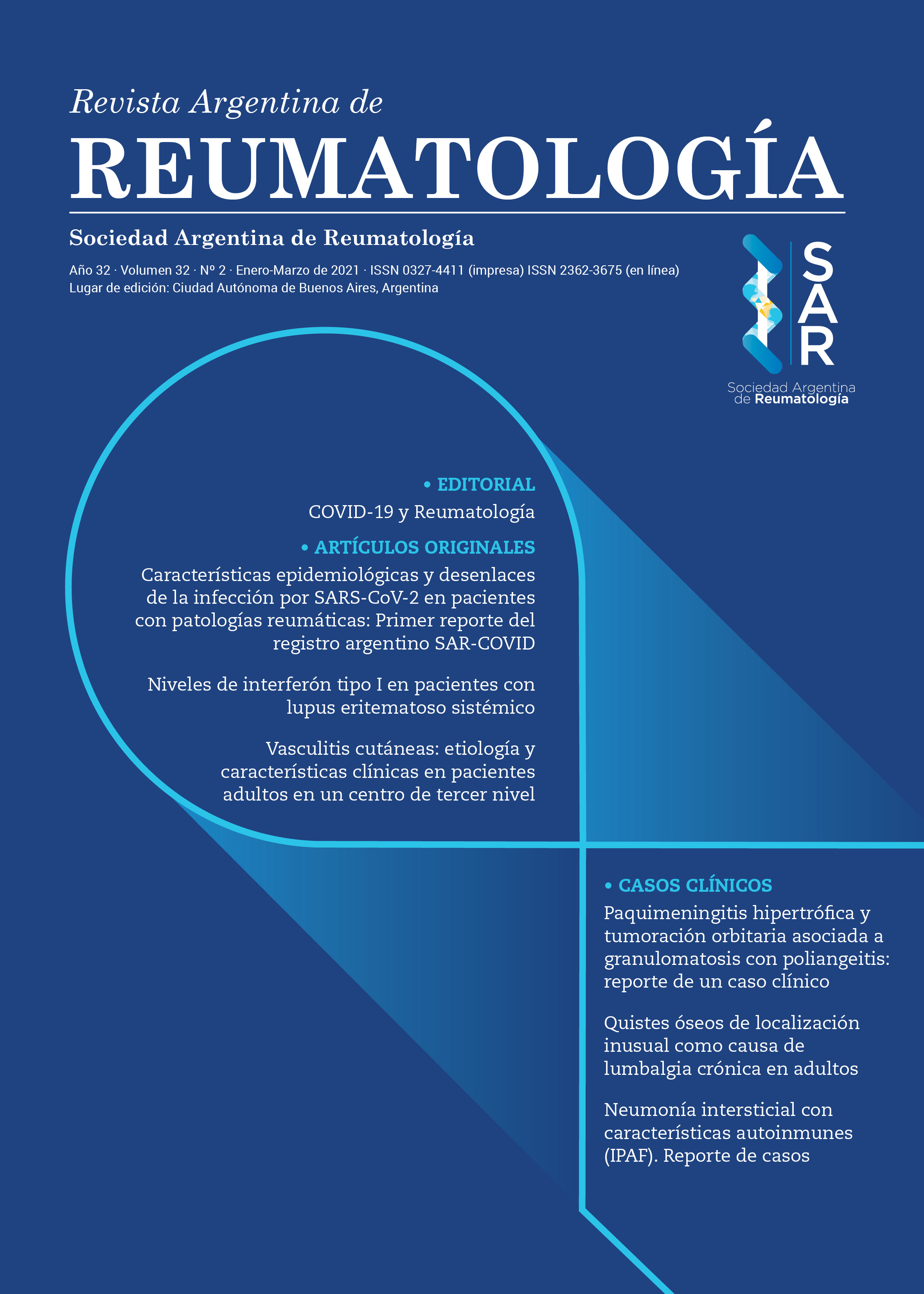Síndrome de encefalopatía posterior reversible en lupus eritematoso sistémico
Resumen
El síndrome de encefalopatía posterior reversible (PRES) es una condición reversible, poco conocida en el lupus eritematoso sistémico (LES) que puede semejar al lupus neuropsiquiátrico. Las manifestaciones de PRES son cefalea, convulsiones, alteración del nivel de conciencia y amaurosis. En la mayoría de los casos, la TC (tomografía computarizada) del cerebro muestra lesiones hipodensas en el lóbulo parieto-occipital. Aunque este síndrome es poco común, el reconocimiento rápido y preciso permite un tratamiento temprano con resultados favorables. Presentamos un caso clínico de una paciente con debut de LES posterior a episodio de eclampsia, y que durante el puerperio tardío presenta hipertensión sostenida asociada a convulsiones y deterioro del nivel de conciencia en contexto de PRES.Citas
I. Damrongpipatkul U, Oranratanachai K, Kasitanon N, et al. Clinical features, outcome, and associated factors for posterior reversible encephalopathy in Thai patients with systemic lupus erythematosus: a case-control study. Clinical Rheumatology 2018;37:691-701.
II. Govoni M, Bortoluzzi A, Padovan M, et al. The diagnosis and clinical management of the neuropsychiatric manifestations of lupus. Journal of Autoimmunity 2016;74:41-72.
III. Lai CC, Chen WS, Chang YS et al. Clinical Features and Outcomes of Posterior Reversible Encephalopathy Syndrome in Patients with Systemic Lupus Erythematosus. Arthritis Care & Research 2013;65:1766-1774.
IV. Bartynski W.S. Posterior Reversible Encephalopathy Syndrome, Part 2: Controversies Surrounding Pathophysiology of Vasogenic Edema. American Journal of Neuroradiology 2008;29:1043-1049.
V. Fuseau M, Villagómez M, Garrido D, et al. Diagnóstico y manejo de síndrome de encefalopatía posterior reversible asociado a lupus eritematoso sistémico. Reporte de caso clínico. Revista Colombiana de Reumatología 2018;6:74-79.
VI. Hartmann H. Posterior Reversible Encephalopathy: An Epileptic Syndrome? Neuropediatrics 2017;48:64-65.
VII. Carrillo R, Echevarría J, De los Ríos A, et al. Síndrome de encefalopatía reversible posterior. Medicina Interna de México 2013;29:299-306.
VIII. Merayo J, Apodaca E, Vargas A, et al. Clinical outcomes and risk factors for posterior reversible encephalopathy syndrome in systemic lupus erythematosus: a multicentric case-control study. Journal of Neurology, Neurosurgery, and Psychiatry 2016;87:287-294.
IX. Liu B, Zhang X, Zhang FC, et al. Posterior reversible encephalopathy syndrome could be an underestimated variant of “reversible neurological deficits” in Systemic Lupus Erythematosus. BMC Neurology 2012;12:1-8.
X. Kimura M, Aramaki K, Wada T, et al. Reversible focal neurological deficits in systemic lupus erythematosus: Report of 2 cases and review of the literature. Journal of the Neurological Sciences 2008;272:71-76.
XI. Ishimori ML, Pressman BD, Wallace DJ, et al. Posterior reversible encephalopathy syndrome: another manifestation of CNS SLE? Lupus 2007;16:436-443.
XII. Magnano M, Bush T, Herrera I, et al. Reversible Posterior Leukoencephalopathy in Patients with Systemic Lupus Erythematosus. Seminars in Arthritis and Rheumatism 2006;6:396-402.
XIII. Gatla N, Annapureddy N, Sequeira W, et al. Posterior Reversible Encephalopathy Syndrome in Systemic Lupus Erythematosus.
XIV. Journal of Clinical Rheumatology 2013;19:334-340. 14. López J, Chen J, Tahsin H, et al. Thrombotic Thrombocytopenic Purpura and Related Thrombotic Microangiopathies. Consultative Hemostasis and Thrombosis (Fourth edition) 2019:448-472.
XV. Shankar J, Banfield J. Posterior Reversible Encephalopathy Syndrome: A Review. Canadian Association of Radiologists Journal. 2017;68:147-153.
XVI. Rabinstein A, Mandrekar J, Merrell R, et al. Blood Pressure Fluctuations in Posterior Reversible Encephalopathy Syndrome. Journal of Stroke and Cerebrovascular Diseases 2012;21:254-258.
XVII. Karia SJ, Rykken JB, McKinney ZJ, et al. Utility and Significance of Gadolinium-Based Contrast Enhancement in Posterior Reversible Encephalopathy Syndrome. American Journal of Neuroradiology 2016;37:415-422.
XVIII. Bag AK, Cure JK, Sullivan JC, et al. Central variant of posterior reversible encephalopathy syndrome in systemic lupus erythematosus: new associations? Lupus 2010;19:225-226. 1
XIX. Abbott NJ, Mendonça LL, Dolman DE. The blood-brain barrier in systemic lupus erythematosus. Lupus 2003;12:908-915.
XX. Lee SC, Dickson DW, Liu W, et al. Induction of nitric oxide synthase activity in human astrocytes by interleukin-1 beta and interferon-gamma. Journal of Neuroimmunology 1993;46:19-24.
XXI. Baizabal JF, Barragán HM, Padilla HJ, et al. Posterior reversible encephalopathy syndrome as a complication of acute lupus activity. Clinical Neurology and Neurosurgery 2009;111:359-363.
XXII. Vila LM, Alarcon GS, McGwin G, et al. Systemic lupus erythematosus in a multiethnic US cohort, XXXVII: association of lymphopenia with clinical manifestations, serologic abnormalities, disease activity, and damage accrual. Arthritis Care & Research 2006;55:799-806.
XXIII. Bohm I. Apoptosis: the link between autoantibodies and leuko-/ lymphocytopenia in patients with lupus erythematosus. Scand J Rheumatol 2004;33:409-416.
XXIV. Bartynski WS, Boardman JF. Distinct imaging patterns and lesion distribution in posterior reversible encephalopathy syndrome. Am J Neuroradiol 2007;28:1320-1327.
XXV. Covarrubias DJ, Luetmer PH, Campeau NG. Posterior reversible encephalopathy syndrome: Prognostic utility of quantitative diffusion-weighted MR images. Am J Neuroradiol 2002;23:1038-1048.
XXVI. Varaprasad IR, Agrawal S, Prabu VN, et al. Posterior reversible encephalopathy syndrome in systemic lupus erythematosus. J Rheumatol. 2011;38:1607-1611.
XXVII. Shaharir S, Remli R, Marwan A, et al. Posterior reversible encephalopathy syndrome in systemic lupus erythematosus: pooled analysis of the literature reviews and report of six new cases. Lupus 2013;22:492-496.
Derechos de autor 2019 Sociedad Argentina de Reumatología

Esta obra está bajo licencia internacional Creative Commons Reconocimiento-NoComercial-SinObrasDerivadas 4.0.






